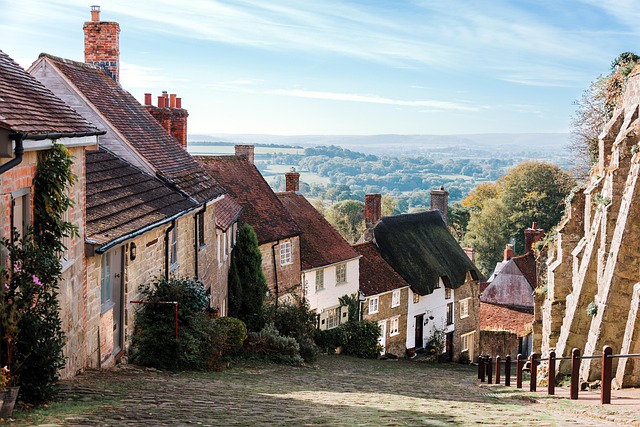The mid-19th century gold rush in Lane County, Oregon, drove economic growth and transformation but also left significant environmental impacts. Widespread mining operations disrupted ecosystems, depleted fish populations, and caused habitat destruction. This period shaped the county's identity economically but prompted ongoing rehabilitation efforts to address lasting ecological strain on natural resources. Balancing economic development with environmental stewardship remains a key challenge for modern Lane County as a legacy of gold rush economics.
“Lane County, Oregon, witnessed a dramatic turn of events during the 19th century with the discovery of gold, igniting an economic boom that reshaped the region. This article delves into the historical context of the gold rush in Lane County, exploring its impact on labor migration and local ecosystems. From deforestation to water resource management challenges, we analyze the environmental consequences. Furthermore, we discuss long-term sustainability efforts, providing insights into how the legacy of this era continues to influence the county’s present and future.”
- Historical Gold Discovery in Lane County
- Economic Boom and Labor Migration Patterns
- Environmental Impact on Local Ecosystems
- Land Use Changes and Deforestation
- Water Resource Management Challenges
- Long-Term Sustainability and Legacy
Historical Gold Discovery in Lane County

In the mid-19th century, Lane County Oregon became a focal point for one of the state’s most significant historical events—the gold rush. The discovery of gold in the nearby rivers and streams sparked an influx of prospectors, each hoping to strike it rich. This period was pivotal for the county’s economics, transforming it from a relatively unknown region into a bustling center of activity. The gold rush not only attracted local residents but also drew people from across the country and even internationally, contributing to a diverse and lively community.
The environmental effects of this gold rush were profound. The relentless search for precious metals led to extensive mining operations, which had significant impacts on the local landscape. Rivers once teeming with fish became depleted as miners diverted water for their sluice boxes and pans. The once vibrant ecosystem was disrupted, leaving a trail of ecological changes in its wake. Despite these challenges, the gold rush era left an indelible mark on Lane County’s history and continues to shape its identity even today.
Economic Boom and Labor Migration Patterns

The gold rush in Lane County, Oregon, sparked an immediate and profound economic transformation. The discovery of precious metals attracted a surge of prospectors, each hoping to strike it rich. This influx led to a boom in local businesses as the county’s infrastructure developed to accommodate the growing population. Mining operations became the backbone of the economy, attracting labor from various regions. Migrants flocked to Lane County, drawn by the promise of prosperity and gold. Many arrived with skilled trades, contributing to the establishment of diverse industries to support the burgeoning mining sector. The economic effects were far-reaching, as the county’s fortunes were tied to the fickle nature of gold mining and the labor patterns it fostered.
Environmental Impact on Local Ecosystems

The Lane County Oregon gold rush, while fueling a significant economic boom in the region during the mid-19th century, had profound environmental consequences. The influx of prospectors and settlers led to widespread deforestation as they cleared land for mining operations and settlements. This clearing disrupted local ecosystems, altering habitats and reducing biodiversity. Streams and rivers were also heavily impacted by the rush; heavy erosion from mining activities caused sedimentation downstream, affecting aquatic life and water quality.
The gold rush’s economic significance cannot be understated, driving the development of towns like Eugene and bringing in diverse populations seeking prosperity. However, these same factors contributed to a period of intense environmental strain. The legacy of this era remains evident today, with efforts ongoing to rehabilitate affected areas and protect the delicate balance of Lane County’s natural ecosystems.
Land Use Changes and Deforestation

The gold rush in Lane County, Oregon, brought about significant shifts in land use and environmental changes. With the influx of prospectors and settlers, vast stretches of forests and natural habitats were cleared to make way for mining operations, towns, and agricultural lands. The demand for resources fueled deforestation on an unprecedented scale, as trees were felled for lumber, fuel, and building materials. This rapid deforestation had profound implications for the local ecosystem, disrupting the balance and biodiversity that had characterized the region.
The economic drive behind the gold rush led to intensive land conversion, transforming pristine forests into settled landscapes. Mining activities also contributed to soil erosion and sedimentation in nearby rivers and streams, further impacting the environment. In retrospect, while the gold rush brought prosperity to some, it left a lasting ecological footprint on Lane County’s natural resources.
Water Resource Management Challenges

The Lane County Oregon gold rush, while economically transformative, presented significant challenges in water resource management. The sudden influx of miners and settlers led to intensively increased water demand for mining operations, agriculture, and domestic use. This strain on local water sources, many of which were already under stress from natural variations and growing populations, became a pressing issue.
The gold rush’s environmental impact was profound, with significant alterations to the region’s hydrology. Stream alterations for mining purposes, such as building dams and diversions, disrupted natural water flows and habitats. Additionally, improper waste disposal practices contributed to water pollution, further exacerbating the challenges faced by local communities. In light of these issues, sustainable water resource management became crucial for the long-term viability of Lane County’s economy and ecosystem.
Long-Term Sustainability and Legacy

The Lane County Oregon gold rush, while a significant moment in the region’s history, left an indelible mark on the environment that has lasting implications. The influx of prospectors and settlers led to intensive mining operations, deforestation, and over-exploitation of natural resources, causing severe ecological damage. However, beyond the immediate disruption, the economic legacy of this period set the stage for long-term sustainability challenges.
The gold rush fueled a boom in local businesses, infrastructure development, and land speculation. While these short-term gains contributed to the county’s growth, they also sowed seeds of future environmental degradation. The demand for housing, agriculture, and industry led to unsustainable land use practices, including clear-cutting forests and intensive farming, which disrupted ecosystems and reduced biodiversity. As the initial fervor subsided, Lane County found itself facing the task of balancing economic aspirations with environmental stewardship, a delicate balance that continues to shape its development trajectory in the modern era.
